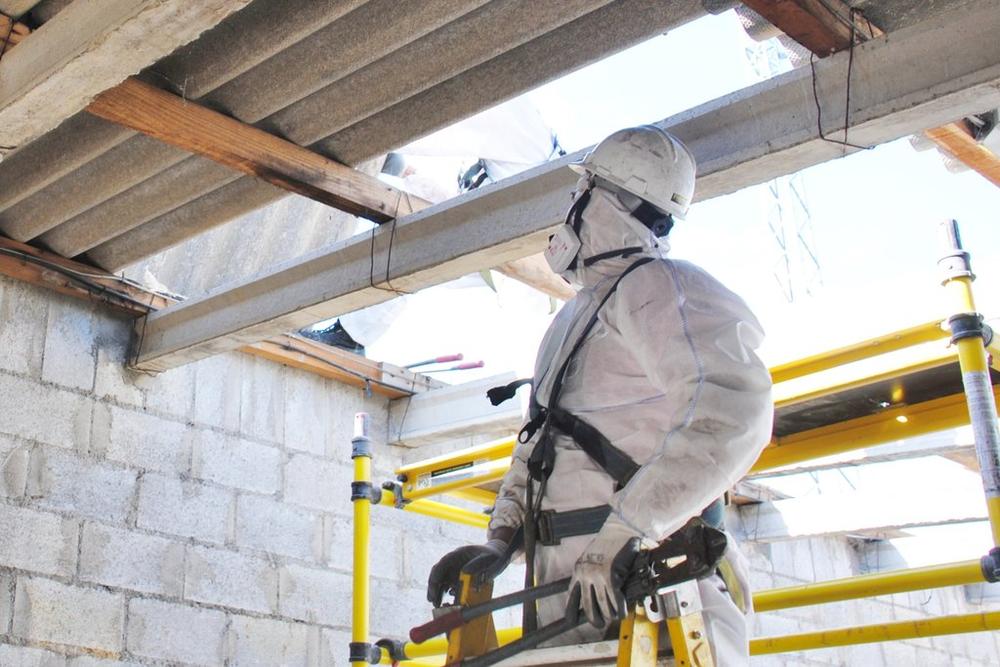The Complete Process of Accredited Asbestos Testing to Guarantee Residential Property Compliance
In the world of residential property management and compliance, the procedure of certified asbestos testing stands as a crucial component to make certain the safety and security and wellness of passengers. From the first analysis to the final analysis of results, each phase plays an essential role in identifying the presence of asbestos within a building.
Accredited Asbestos Testing: Initial Assessment
In performing the first analysis for accredited asbestos testing, a careful assessment of the residential property's products is critical to properly recognize potential asbestos-containing products. Unique interest is given to materials that are vulnerable to damage or disturbance, as these circumstances can launch unsafe asbestos fibers into the air.
Accredited asbestos assessors follow strict procedures set by regulatory bodies to guarantee the accuracy and dependability of the screening procedure. By meticulously documenting findings and utilizing sophisticated screening techniques, assessors can supply homeowner with a detailed record outlining the presence of asbestos, if any, and the advised steps for reduction or elimination. This preliminary analysis establishes the foundation for succeeding actions to address asbestos concerns and make certain the safety and compliance of the building.
Sample Collection Procedures for Asbestos Examining
Efficient example collection treatments are crucial in guaranteeing accurate asbestos testing outcomes and conformity with regulatory criteria. When gathering samples for asbestos screening, it is crucial to comply with stringent protocols to lessen the risk of contamination and guarantee the integrity of the outcomes.
First of all, it is very important to determine the suspected asbestos-containing products (ACMs) and focus on sampling areas based upon factors such as the material's problem, ease of access, and capacity for disturbance. Asbestos Testing. Samples should be collected from different places within the residential or commercial property to provide a thorough analysis of asbestos existence
Throughout sample collection, certified professionals ought to use suitable individual protective tools (PPE) to safeguard versus asbestos exposure. They have to utilize tidy devices, such as non reusable gloves and plastic sheeting, to avoid cross-contamination in between examples. Samples ought to be carefully collected using a defined technique, such as damp cleaning or coring, and securely secured in closed containers to protect their honesty during transport to the lab for evaluation.
Lab Evaluation Refine for Asbestos Examples
Upon conclusion of the example collection process, the asbestos examples are carefully moved to approved labs for meticulous evaluation. The initial action in the lab evaluation process is example prep work, where the collected examples are meticulously refined to extract the asbestos fibers.

As Visit Your URL soon as the evaluation is total, a comprehensive record is generated, laying out the findings and verifying whether asbestos is existing, the kind of asbestos fibers recognized, and the focus levels. This details is essential for home proprietors to take the essential actions to make sure read this compliance with asbestos laws and secure the health and wellness of residents.

Coverage and Analysis of Asbestos Examination Outcomes
Recognized asbestos screening laboratories provide detailed reports that offer critical insights into the visibility, kind, and focus levels of asbestos fibers found in examples gathered from properties. These reports are important for homeowner and supervisors to recognize the risk presented by asbestos and make notified choices concerning its monitoring or elimination. The reports usually consist of details on the methods utilized for screening, the areas where examples were taken, the sort of asbestos determined (such as chrysotile, amosite, or crocidolite), and the concentration levels of asbestos fibers spotted.
Analyzing these results needs experience to assess the possible wellness threats related to asbestos exposure, establish the proper strategy, and ensure regulatory compliance (Asbestos Testing). Depending on the findings, referrals may vary from continued monitoring and upkeep to encapsulation or total asbestos reduction. Homeowner should thoroughly assess these records and speak with asbestos specialists to establish an extensive plan for dealing with any asbestos issues identified
Guaranteeing Home Compliance With Asbestos Rules
To preserve adherence with asbestos regulations, homeowner have to diligently carry out procedures to make sure conformity with appropriate legislations and guidelines. This consists of Full Report conducting normal asbestos assessments by certified professionals to recognize any type of visibility of asbestos-containing materials within the residential or commercial property. When asbestos is determined, homeowner should follow asbestos administration prepares that summary proper control, removal, or encapsulation procedures to stop direct exposure and spread of asbestos fibers. Compliance additionally entails keeping comprehensive records of asbestos screening, upkeep, and removal activities for assessment functions.
Homeowner ought to give asbestos awareness training to workers and occupants to decrease the threat of asbestos exposure and make certain appropriate handling of products that may contain asbestos. Furthermore, it is essential to stay notified regarding any updates or adjustments in asbestos regulations to change management practices accordingly. By proactively attending to asbestos conformity demands, homeowner can develop a secure setting for owners and mitigate prospective lawful and wellness risks linked with asbestos exposure.
Conclusion
In conclusion, accredited asbestos screening is an important procedure for ensuring property conformity with laws. The initial evaluation, example collection procedures, research laboratory evaluation, and analysis of outcomes are all vital action in this procedure. By complying with these treatments, homeowner can recognize and address any asbestos threats existing, protecting the health and wellness and safety of passengers and preserving conformity with governing requirements.